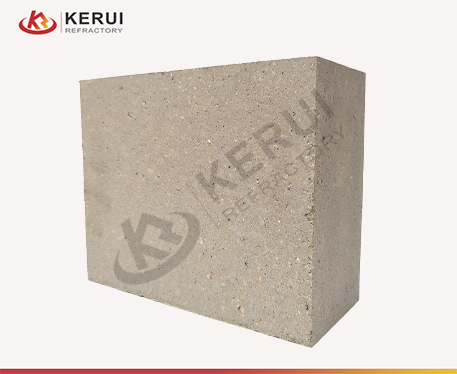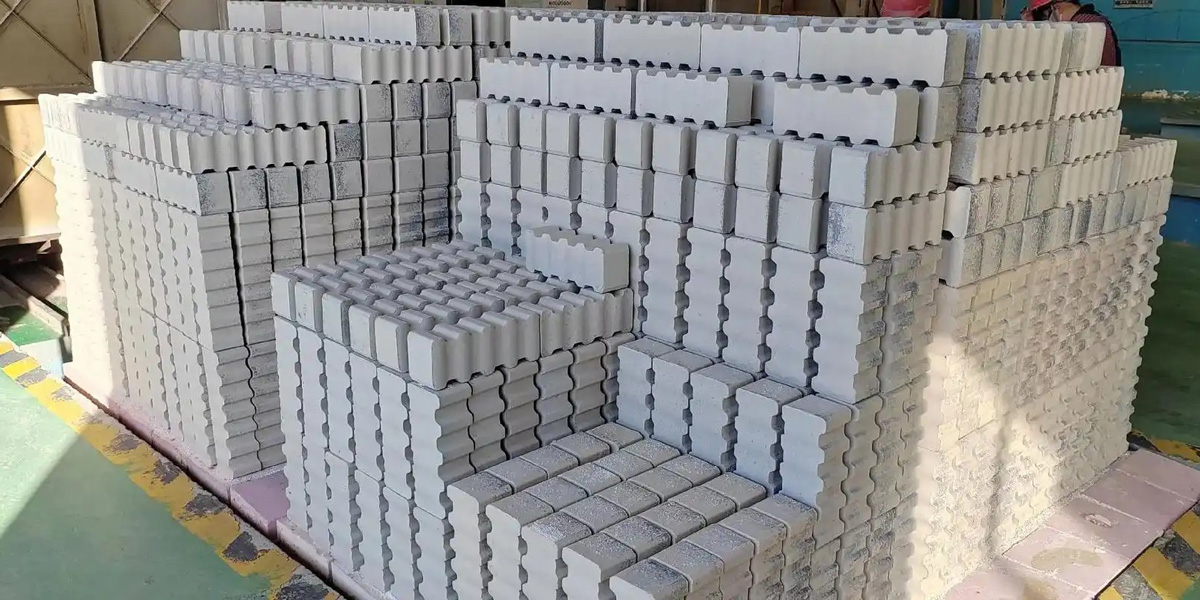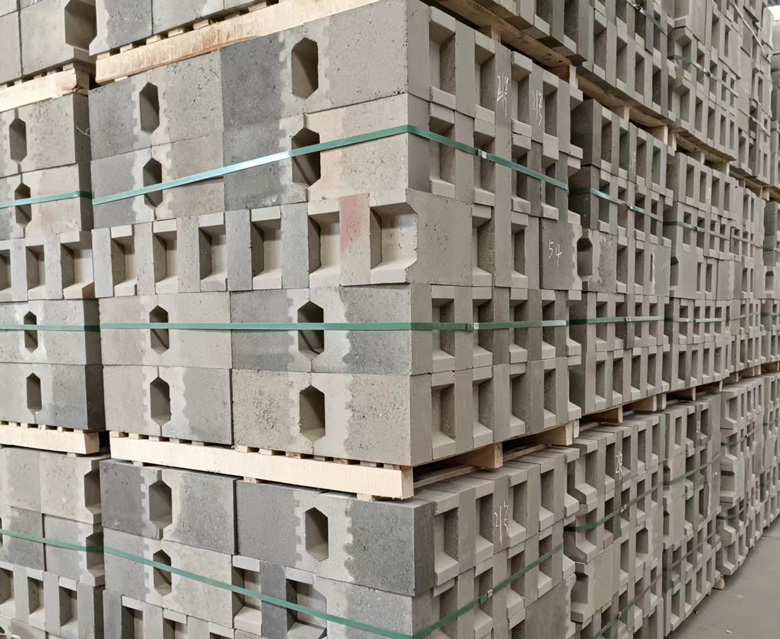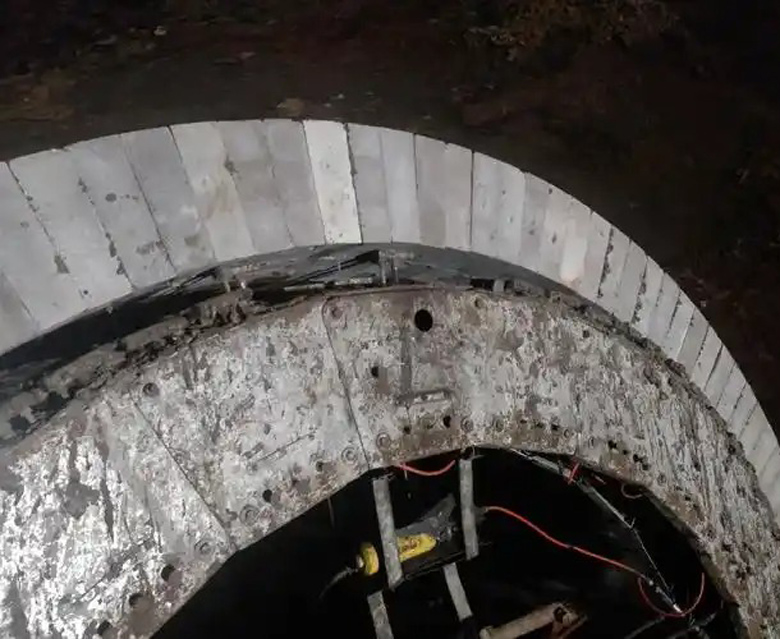Phosphate bonded high alumina brick is a type of refractory product primarily made from high-alumina bauxite clinker, using phosphate solution or aluminum phosphate solution as a binder. They are formed under high pressure and undergo low-temperature heat treatment. This product features high strength, excellent refractoriness, superior thermal shock stability, and erosion resistance. If you require this product, please contact Kerui Refractory.
- Al2O3: ≥75-80%;
- Bulk Density: 2.68-2.8g/cm³;
- Refractoriness Under Load: 17700-1790ºC;
- Cold Crushing Strength: 60-80MPa;
- Size: 230*114*65mm (standard)/And other sizes;

Specification of Phosphate Bonded High Alumina Brick
- Main Ingredients: High-alumina bauxite clinker (Al₂O₃ content ≥ 75%)
- Binder: Phosphate solution or aluminum phosphate solution
- Additives: Depending on specific requirements, small amounts of clay, silica fume, etc., can be added to improve performance.
| Item | Chemical Bonded | Phosphate Bonded – P | Phosphate Bonded – PA | High RUL |
|---|---|---|---|---|
| Al2O3, %, ≥ | 75 | 75 | 80 | 78 |
| Fe2O3, %, ≤ | 2 | 2 | 2 | 2 |
| CaO, % | – | 0.6 | 0.6 | – |
| Bulk & Density, g/cm3 | 2.65 | 2.7 | 2.75 | 2.8 |
| Refractoriness, ℃ , ≥ | 1770 | 1790 | 1790 | 1790 |
| Apparent Porosity, %, ≤ | 18 | 18-21 | 20 | 19 |
| Cold Crushing Strength, MPa, ≥ | 60 | 70 | 75 | 80 |
| Refractoriness Under Load of 0.2MPa, ℃ , ≥ | 1400 | 1350 | 1450 | 1460 |
| Thermal Shock Resistance (1100 ℃ -water cooling), times | 15 | – | – | 20 |
Production Process of Kerui Phosphate Bonded High Alumina Bricks
- Raw Material Preparation: Crush and screen special-grade or first-grade high-alumina bauxite clinker to obtain the required particle size.
- Mixing of Ingredients: Mix high-alumina bauxite clinker, binder, and additives in proportion to achieve uniformity.
- Molding: Use a high-pressure molding machine to shape the mixed material into bricks.
- Drying: Dry the molded refractory bricks to remove moisture.
- Heat Treatment: Perform low-temperature heat treatment (approximately 500°C) on the bricks, allowing the binder to react with the raw materials and form a strong bond.

Advantages of Kerui Phosphate Bonded High Alumina Bricks
- High Strength: Phosphate-bonded high-alumina bricks possess high room-temperature compressive strength and high-temperature flexural strength, enabling them to withstand significant mechanical and thermal stresses.
- High Refractoriness: Due to the primary ingredient being high-alumina bauxite clinker, the product has a high refractoriness, reaching above 1750°C.
- Excellent Thermal Shock Stability: Phosphate-bonded high-alumina bricks exhibit good thermal shock resistance, capable of withstanding rapid cooling and heating without cracking easily.
- Good Erosion Resistance: This product has a certain level of resistance to both acidic and alkaline media, making it suitable for various industrial furnace environments.
- Precise Dimensions: Utilizing high-pressure molding, the product dimensions are precise, facilitating construction and masonry.


Application Industries and Furnaces
Phosphate bonded high alumina bricks are widely used in the following industries and furnaces:
- Building Materials Industry: Cement kilns, glass kilns, ceramic kilns, etc.
- Metallurgy Industry: Steelmaking furnaces, steel rolling heating furnaces, soaking furnaces, etc.
- Chemical Industry: Coal gasification furnaces, coke ovens, calcium carbide furnaces, etc.
- Other Industries: Waste incineration furnaces, boilers, etc.


Global Cases of Kerui Phosphate Bonded High Alumina Bricks
Phosphate bonded high alumina bricks have earned the trust of customers in over 50 countries across Asia, Europe, Africa, the Americas, and Oceania due to their excellent performance and reliability.
These bricks excel in various high-temperature environments, creating significant value for customer. Companies like Hyundai Steel in Korea, Hoa Phat Group in Vietnam, Qing Shan Industrial Park in Indonesia, United Steel in the Philippines, Lucky Cement in Pakistan, and Aramco in Saudi Arabia use them.


Precautions for Using Phosphate Bonded Bricks
- Storage: Store the product in a dry, well-ventilated warehouse to prevent moisture absorption.
- Construction: When laying bricks, use refractory mortar that matches the properties of the bricks and follow the construction specifications strictly.
- Firing: Fire newly constructed furnaces according to the firing curve to avoid rapid cooling and heating.
- Maintenance: Regularly inspect and maintain the furnace, replacing damaged refractory bricks in a timely manner. See more details on LinkedIn.



